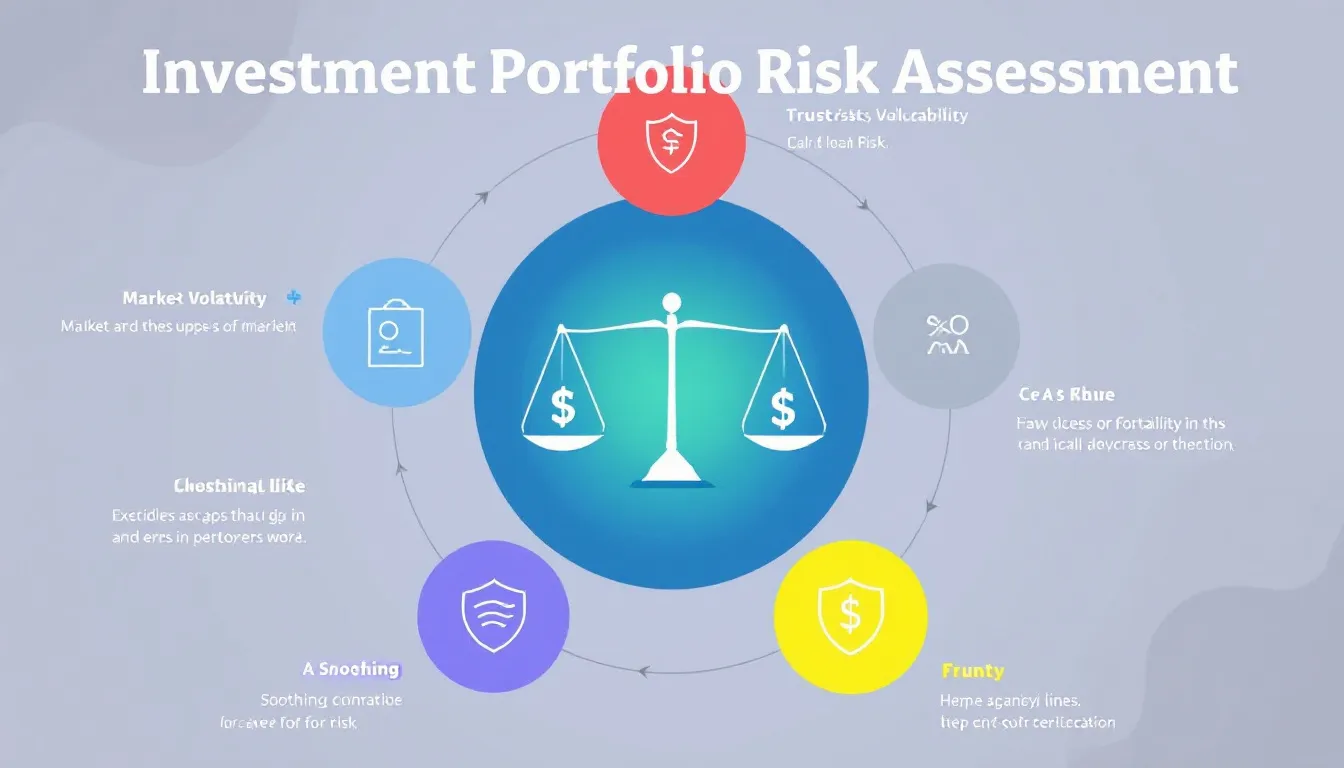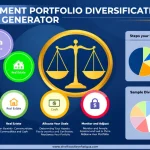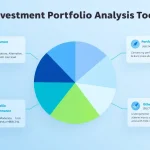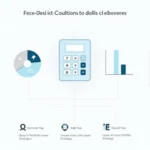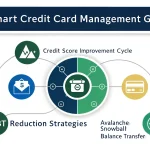Investment Portfolio Risk Assessment
Is this tool helpful?
How to Use the Investment Portfolio Risk Assessment Tool Effectively
To make the most of our Investment Portfolio Risk Assessment Tool, follow these steps:
- List your portfolio assets: In the first field, enter the details of your investment portfolio. Include each asset type, its current value, and percentage allocation. For example:
- US Large-Cap Stocks: $100,000 (35%)
- International Developed Markets: $50,000 (17.5%)
- Emerging Markets: $30,000 (10.5%)
- Corporate Bonds: $60,000 (21%)
- Real Estate Investment Trusts (REITs): $30,000 (10.5%)
- Cash and Cash Equivalents: $15,000 (5.5%)
- Specify your investment goals: Enter your short-term and long-term financial objectives. For instance: “Short-term: Save for a down payment on a house within 5 years. Long-term: Build a retirement fund to support a comfortable lifestyle by age 60.”
- Indicate your risk tolerance: Describe your comfort level with investment risk. Example: “Moderately aggressive – willing to accept higher volatility for potentially greater returns.”
- Set your investment horizon: Specify the expected duration of your investment. For example: “25 years until retirement.”
- Describe economic conditions (optional): If you’d like, provide information about current economic conditions and future outlook that may impact your investments. For instance: “Concerned about potential market correction due to high valuations, rising interest rates, and geopolitical tensions.”
- Submit the form: Click the “Assess Portfolio Risk” button to generate your personalized risk assessment report.
Once you receive your risk assessment report, review it carefully and consider the recommendations provided to optimize your investment strategy.
Understanding Investment Portfolio Risk Assessment
An investment portfolio risk assessment is a crucial process for investors to evaluate the potential risks associated with their investment holdings. This tool leverages decades of financial expertise to analyze your portfolio’s composition, considering various risk factors such as market volatility, liquidity risk, credit risk, and interest rate risk.
The primary purpose of this assessment is to provide you with a comprehensive understanding of your portfolio’s risk profile, enabling you to make informed decisions about your investments. By identifying potential vulnerabilities and areas of concern, you can take proactive steps to optimize your portfolio’s risk-return balance and align it with your financial goals and risk tolerance.
Key Benefits of Investment Portfolio Risk Assessment
- Enhanced Risk Awareness: Gain a clear understanding of the various risks present in your investment portfolio.
- Improved Decision-Making: Make more informed investment choices based on a thorough analysis of your portfolio’s risk profile.
- Goal Alignment: Ensure your investment strategy aligns with your short-term and long-term financial objectives.
- Risk Mitigation: Identify potential areas of concern and receive recommendations for risk reduction strategies.
- Performance Optimization: Balance risk and potential returns to maximize your portfolio’s efficiency.
- Diversification Analysis: Evaluate the effectiveness of your portfolio’s diversification strategy.
- Personalized Insights: Receive tailored advice based on your unique financial situation and goals.
The Importance of Regular Portfolio Risk Assessments
Conducting regular risk assessments of your investment portfolio is essential for maintaining a healthy and balanced investment strategy. Market conditions, economic factors, and personal circumstances can change over time, potentially altering the risk profile of your investments. By periodically evaluating your portfolio’s risk, you can:
- Identify shifts in risk exposure due to market movements or changes in asset allocation.
- Ensure your portfolio remains aligned with your evolving financial goals and risk tolerance.
- Capitalize on new investment opportunities while managing potential threats.
- Maintain an optimal balance between risk and potential returns.
- Stay informed about the overall health and performance of your investments.
Components of a Comprehensive Risk Assessment
Our Investment Portfolio Risk Assessment Tool considers several key factors to provide a holistic view of your portfolio’s risk profile:
1. Asset Allocation Analysis
The tool examines the distribution of your investments across different asset classes, such as stocks, bonds, real estate, and cash. A well-diversified portfolio can help mitigate risk by spreading investments across various asset types that may respond differently to market conditions.
2. Market Risk Evaluation
This component assesses the potential for losses due to market-wide factors affecting asset prices. It considers historical volatility and potential future market scenarios to gauge your portfolio’s sensitivity to market fluctuations.
3. Liquidity Risk Assessment
The tool analyzes the ease with which your investments can be converted to cash without significant loss in value. Illiquid assets may pose challenges during market downturns or when you need to access funds quickly.
4. Credit Risk Analysis
For fixed-income investments, the assessment examines the creditworthiness of bond issuers and the potential for default. This helps identify any concentration of credit risk within your portfolio.
5. Interest Rate Risk Evaluation
The tool considers how changes in interest rates may affect your investments, particularly fixed-income securities. Rising interest rates can negatively impact bond prices, while falling rates may reduce income from fixed-rate investments.
6. Concentration Risk Assessment
This component identifies any overexposure to specific sectors, industries, or individual securities that may increase your portfolio’s vulnerability to sector-specific or company-specific risks.
Understanding Risk Metrics and Measurements
To provide a comprehensive risk assessment, our tool utilizes various risk metrics and measurements. Understanding these concepts can help you interpret the results more effectively:
Standard Deviation
Standard deviation is a statistical measure of volatility that quantifies the amount of variation or dispersion in a set of data points. In the context of investments, it measures the historical volatility of an asset or portfolio. A higher standard deviation indicates greater price fluctuations and, therefore, potentially higher risk.
$$\text{Standard Deviation} = \sqrt{\frac{\sum_{i=1}^{n} (x_i – \mu)^2}{n – 1}}$$Where:
- $$x_i$$ is each value in the dataset
- $$\mu$$ is the mean of the dataset
- $$n$$ is the number of data points
Beta
Beta is a measure of an asset’s or portfolio’s volatility in relation to the overall market. A beta of 1 indicates that the investment tends to move in line with the market. A beta greater than 1 suggests higher volatility than the market, while a beta less than 1 indicates lower volatility.
$$\beta = \frac{\text{Covariance}(r_i, r_m)}{\text{Variance}(r_m)}$$Where:
- $$r_i$$ is the return of the investment
- $$r_m$$ is the return of the market
Value at Risk (VaR)
Value at Risk is a statistical measure that estimates the potential loss in value of an investment over a defined period for a given confidence interval. For example, a 1-day 95% VaR of $10,000 means there is a 5% chance that the portfolio will lose more than $10,000 in a single day.
$$\text{VaR} = \text{Initial Investment} \times (\text{Mean} – (\text{Z-score} \times \text{Standard Deviation}))$$Sharpe Ratio
The Sharpe ratio measures the risk-adjusted return of an investment or portfolio. It calculates the excess return (or risk premium) per unit of risk. A higher Sharpe ratio indicates better risk-adjusted performance.
$$\text{Sharpe Ratio} = \frac{R_p – R_f}{\sigma_p}$$Where:
- $$R_p$$ is the return of the portfolio
- $$R_f$$ is the risk-free rate
- $$\sigma_p$$ is the standard deviation of the portfolio’s excess return
Interpreting Your Risk Assessment Results
Once you receive your personalized risk assessment report, it’s essential to understand how to interpret the results and apply them to your investment strategy. Here are some key aspects to consider:
1. Overall Risk Level
The report will provide an assessment of your portfolio’s overall risk level, typically categorized as low, moderate, or high. This evaluation takes into account various factors, including asset allocation, market conditions, and your investment goals.
2. Asset Allocation Analysis
Review the breakdown of your portfolio across different asset classes. The report will indicate whether your current allocation aligns with your risk tolerance and investment objectives. It may suggest adjustments to achieve a more balanced or appropriate mix of assets.
3. Risk Metrics
Examine the various risk metrics provided, such as standard deviation, beta, and Sharpe ratio. Compare these values to benchmark indices or your target risk levels to gauge how your portfolio’s risk profile aligns with your expectations and goals.
4. Diversification Assessment
The report will evaluate the effectiveness of your portfolio’s diversification. It may highlight any concentration risks or areas where additional diversification could help reduce overall portfolio risk.
5. Scenario Analysis
Look for any scenario analyses that estimate how your portfolio might perform under different market conditions. This can help you understand potential downside risks and prepare for various economic scenarios.
6. Recommendations
Pay close attention to the specific recommendations provided in the report. These may include suggestions for rebalancing your portfolio, adding or reducing exposure to certain asset classes, or implementing risk management strategies.
Practical Applications of Portfolio Risk Assessment
Understanding your portfolio’s risk profile has numerous practical applications that can help you make more informed investment decisions and improve your overall financial well-being. Here are some ways you can apply the insights gained from your risk assessment:
1. Portfolio Rebalancing
Use the risk assessment results to identify when your portfolio has drifted from its target allocation. Regular rebalancing helps maintain your desired risk level and can potentially improve long-term returns.
Example:
Suppose your target allocation is 60% stocks and 40% bonds, but due to strong stock market performance, your current allocation has shifted to 70% stocks and 30% bonds. The risk assessment would highlight this deviation, prompting you to sell some stocks and buy bonds to return to your target allocation.
2. Risk Management Strategies
Based on the assessment, you can implement various risk management strategies to address specific concerns identified in your portfolio.
Example:
If the assessment reveals high concentration risk in a particular sector, you might consider diversifying by adding exposure to other sectors or using sector-specific ETFs to hedge your position.
3. Goal Alignment
Use the risk assessment to ensure your investment strategy aligns with your financial goals and risk tolerance.
Example:
If you’re approaching retirement and your assessment shows a higher risk level than appropriate for your stage in life, you might adjust your portfolio to include more conservative investments that prioritize capital preservation.
4. Performance Evaluation
Compare your portfolio’s risk-adjusted performance to relevant benchmarks to assess how well your investments are performing given their level of risk.
Example:
If your portfolio has a Sharpe ratio of 0.8 while a comparable benchmark index has a Sharpe ratio of 1.2, it may indicate that your portfolio is underperforming on a risk-adjusted basis, prompting you to reconsider your investment strategy or seek professional advice.
5. Investment Selection
Use insights from the risk assessment to guide future investment decisions and ensure new investments complement your existing portfolio.
Example:
If the assessment reveals that your portfolio has low exposure to international markets, you might consider adding international equity funds or ETFs to enhance diversification and potentially improve risk-adjusted returns.
Frequently Asked Questions (FAQ)
Q1: How often should I conduct a portfolio risk assessment?
A1: It’s generally recommended to conduct a portfolio risk assessment at least annually or whenever significant changes occur in your financial situation, market conditions, or investment goals. More frequent assessments (e.g., quarterly) can be beneficial for actively managed portfolios or during periods of high market volatility.
Q2: Can I use this tool for assessing the risk of individual investments?
A2: While this tool is designed primarily for evaluating overall portfolio risk, you can use it to assess the risk contribution of individual investments by entering them as separate line items in your portfolio. However, for a more detailed analysis of specific investments, you may need to use additional specialized tools.
Q3: How does the tool account for different investment time horizons?
A3: The tool considers your specified investment horizon when evaluating risk. Generally, longer investment horizons allow for higher risk tolerance, as short-term volatility can be smoothed out over time. The assessment will provide recommendations tailored to your specific time frame.
Q4: What should I do if the risk assessment suggests my portfolio is too risky?
A4: If the assessment indicates your portfolio has a higher risk level than appropriate for your goals and risk tolerance, consider the following steps:
- Review the specific areas of concern highlighted in the report
- Consider rebalancing your portfolio to reduce exposure to higher-risk assets
- Explore adding more conservative investments or increasing diversification
- Consult with a financial advisor for personalized guidance
Q5: How does the tool handle complex investments like options or derivatives?
A5: The tool primarily focuses on traditional asset classes like stocks, bonds, and real estate. For complex investments such as options or derivatives, you may need to provide an estimate of their market value and allocation within your portfolio. For a more detailed risk analysis of these instruments, consider consulting with a financial professional who specializes in derivative securities.
Q6: Can the tool help me determine the right asset allocation for my goals?
A6: While the primary purpose of the tool is to assess risk, it does provide recommendations for optimizing your portfolio. These suggestions, combined with the risk assessment results, can guide you towards an appropriate asset allocation. However, for a comprehensive financial plan tailored to your specific situation, it’s advisable to work with a qualified financial advisor.
Q7: How does the tool account for potential future economic scenarios?
A7: The tool incorporates historical data and current market conditions to evaluate potential risks. While it doesn’t predict future economic scenarios with certainty, it may use scenario analysis to estimate how your portfolio might perform under different market conditions. The optional field for economic outlook allows you to provide additional context that the tool can consider in its analysis.
Q8: Is this tool suitable for assessing the risk of my retirement portfolio?
A8: Yes, this tool can be particularly useful for assessing retirement portfolio risk. It takes into account your investment horizon and goals, which are crucial factors for retirement planning. The tool can help ensure your retirement portfolio maintains an appropriate balance between growth potential and risk management as you progress through different life stages.
Q9: How does the tool handle international investments and currency risk?
A9: The tool considers international investments as part of your overall portfolio diversification. When listing your assets, be sure to include any international holdings, specifying their current value in your base currency. While the tool doesn’t provide a detailed analysis of currency risk, it does factor in the general volatility and risk characteristics associated with international investments.
Q10: Can I use this tool to compare different portfolio strategies?
A10: Absolutely! You can use this tool to compare the risk profiles of different portfolio strategies. Simply run separate assessments for each potential portfolio composition you’re considering. This allows you to evaluate how changes in asset allocation or the inclusion of different investments might impact your overall risk profile, helping you make more informed decisions about your investment strategy.
Important Disclaimer
The calculations, results, and content provided by our tools are not guaranteed to be accurate, complete, or reliable. Users are responsible for verifying and interpreting the results. Our content and tools may contain errors, biases, or inconsistencies. Do not enter personal data, sensitive information, or personally identifiable information in our web forms or tools. Such data entry violates our terms of service and may result in unauthorized disclosure to third parties. We reserve the right to save inputs and outputs from our tools for the purposes of error debugging, bias identification, and performance improvement. External companies providing AI models used in our tools may also save and process data in accordance with their own policies. By using our tools, you consent to this data collection and processing. We reserve the right to limit the usage of our tools based on current usability factors.
